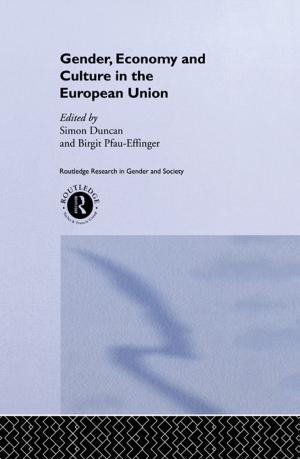Teacher Evaluation Policies and Practices in Japan
How performativity works in schools
Nonfiction, Reference & Language, Education & Teaching, Educational Theory, Evaluation, Aims & Objectives, Educational Reform| Author: | Masaaki Katsuno | ISBN: | 9781317526681 |
| Publisher: | Taylor and Francis | Publication: | March 31, 2016 |
| Imprint: | Routledge | Language: | English |
| Author: | Masaaki Katsuno |
| ISBN: | 9781317526681 |
| Publisher: | Taylor and Francis |
| Publication: | March 31, 2016 |
| Imprint: | Routledge |
| Language: | English |
This book explores the impacts of the introduction of new teacher evaluation policies on teachers and head teachers in Japan, particularly that of producing and reinforcing mutual policing relations among teachers and the destabilisation of their identities. It is timely given the big surge of interest world-wide in measuring and developing teachers’ quality to ensure better learning outcomes. As in many other countries, teachers in Japan have to account for their performance and competence in new ways. This book focuses on the nature and impact of these new accountabilities by drawing on data from a national survey and in-depth interviews with a sample of teachers and head teachers as it surveys:
- New teacher evaluation policies
- Theories of teacher evaluation and performativity
- Views on the new teacher evaluation policies
- The enactment of the new teacher evaluation policies
The quantitative data is used to show how teachers experience and perceive the new teacher evaluation policies and practices, and the qualitative data is used to discuss the depth of analysis required to look at the nature of performativity. This book will be a valued addition to the research base upon which both policy makers and practitioners across the nations can draw for the improvement of teacher evaluation as a means of professional development and accountability.
This book explores the impacts of the introduction of new teacher evaluation policies on teachers and head teachers in Japan, particularly that of producing and reinforcing mutual policing relations among teachers and the destabilisation of their identities. It is timely given the big surge of interest world-wide in measuring and developing teachers’ quality to ensure better learning outcomes. As in many other countries, teachers in Japan have to account for their performance and competence in new ways. This book focuses on the nature and impact of these new accountabilities by drawing on data from a national survey and in-depth interviews with a sample of teachers and head teachers as it surveys:
- New teacher evaluation policies
- Theories of teacher evaluation and performativity
- Views on the new teacher evaluation policies
- The enactment of the new teacher evaluation policies
The quantitative data is used to show how teachers experience and perceive the new teacher evaluation policies and practices, and the qualitative data is used to discuss the depth of analysis required to look at the nature of performativity. This book will be a valued addition to the research base upon which both policy makers and practitioners across the nations can draw for the improvement of teacher evaluation as a means of professional development and accountability.















